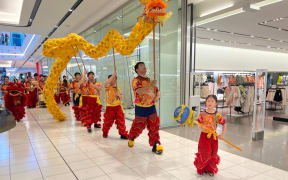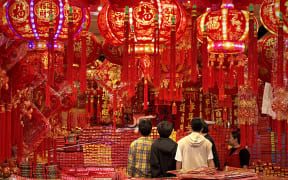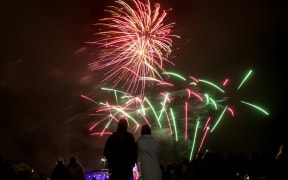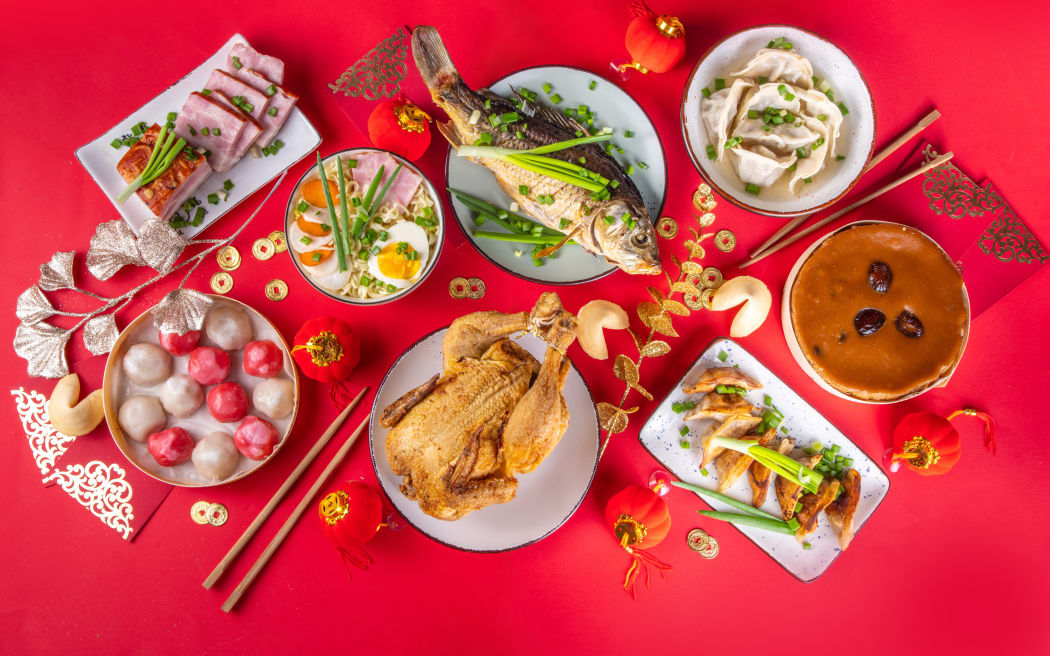
Family members are expected to return home to enjoy a communal dinner on New Year's Eve. Photo: 123rf
Food is never far from preparations for any new year celebrations in Asia.
This is certainly true in China, where family members return home in mind-boggling numbers ahead of Chinese Lunar New Year to reunite with relatives and enjoy a sumptuous feast.
Indeed, the dinner celebrated on New Year's Eve (Nián Yèfàn, 年夜饭) is one of the most important meals of the year, with families preparing a dazzling array of dishes they hope will bring good fortune for the year ahead.
But just what dishes are prepared in China to ensure families are well placed to receive a healthy dollop of good luck and prosperity over the next 12 months?
Limin Bai, a senior lecturer in Chinese studies at Victoria University in Wellington, says dinner on New Year's Eve is such an important tradition that it's essential to prepare a variety of food.
"The entire family gathers to enjoy a special feast on this auspicious evening, marking the commencement of festivities," says Bai, who moved to New Zealand from China almost 30 years ago.
Former MasterChef winner Sam Low says his family's new year culinary selections were inevitably the same every year and typically included a whole fish, chicken, dumplings, new year cake, glutinous rice sweets, noodles and fruit.
"Our Chinese New Year's dinner never really changed," Low says. "A whole fish with head and tail is a must - a whole chicken with head and feet attached as well. That always symbolises, you know, a kind of completion. It's like going through the entire year from head to tail with completion, everything that you do this year will see an end."
Lunar New Year's Eve falls on 9 February this year. While every region in China and beyond has different culinary new year traditions, several common dishes can be found on the tables of many Chinese households symbolising the same desire for prosperity, happiness and good fortune.
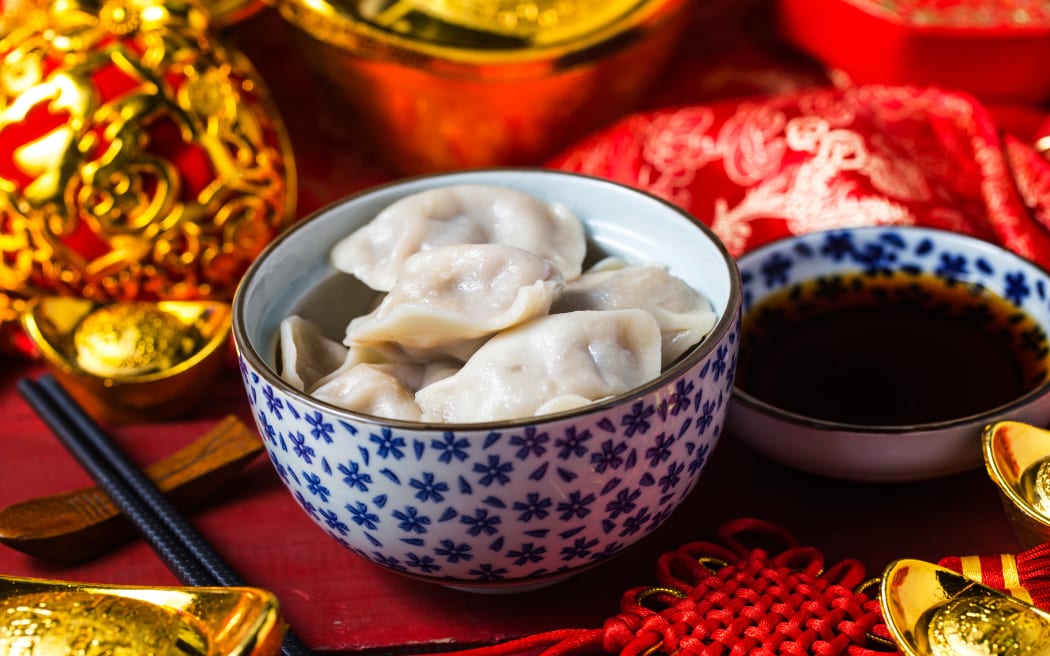
Dumplings are eaten to celebrate many festivities but are most common at Chinese Lunar New Year. Photo: 123rf
Dumplings (jiǎo zi, 饺子)
Dumplings are consumed throughout the year, but many believe that eating a large number of dumplings at Lunar New Year brings greater wealth thanks to their shape.
"The dumplings' shape, resembling an ancient Chinese currency (ingots), serves as a symbol of wealth and prosperity as they grace the dining table," Bai says.
According to Chinese tradition, dumplings are typically wrapped before New Year's Eve and eaten at midnight.
Dumplings are called "jiǎo zi" in Chinese. "Zi shi" refers to the time between 11pm and 1am during the night according to the traditional Chinese clock.
Chinese in ancient times believed that eating dumplings during this two-hour period symbolised a transition from the old year to the new.
Bai says this custom is closely observed by households in the north of China.
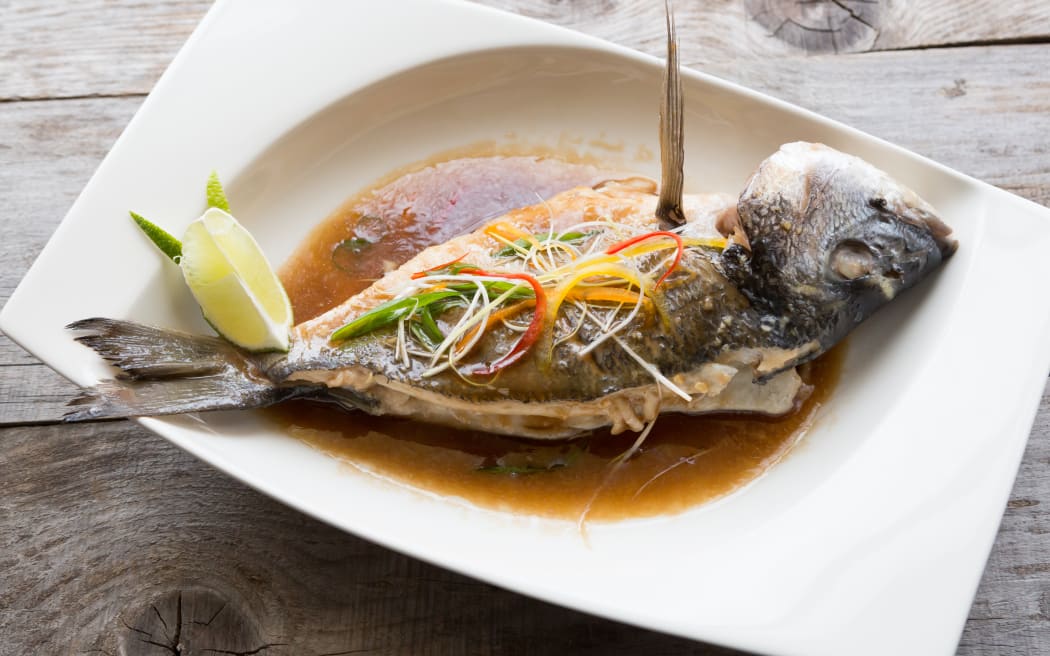
A whole fish is an essential dish at dinner on New Year's Eve. Photo: 123rf
Fish (yú, 整鱼)
Bai says a fish dish is essential for every household on New Year's Eve.
"A fish has the same syllables as the Chinese word for 'abundance'. This dish reflects the phrase 'nián nián yǒu yú' (年年有余), which roughly translates as 'having an abundance of everything every year without fail' in English," Bai says. "It serves as a traditional new year greeting, expressing a desire for continuous abundance in the coming year."
For dinner on New Year's Eve, a fish is served whole with the head and tail attached to symbolise a good beginning and end to the year.
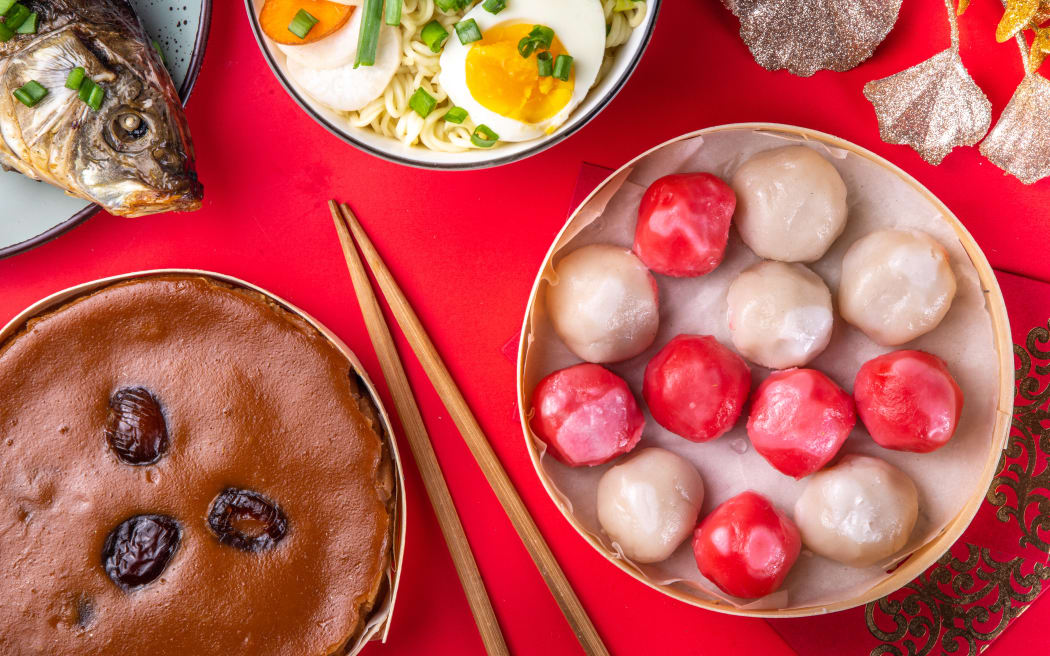
A traditional Chinese Lunar New Year dinner with fried fish, noodles, cake and rice balls. Photo: 123rf
Chinese New Year cake (niángāo, 年糕)
Niángāo, also known as Chinese New Year cake, is a special treat for the festival.The main ingredients of niángāo include sticky rice, sugar, chestnuts and Chinese dates.
Bai says that consuming niángāo is a tradition for most Chinese families on the first day of a new year.
"Eating rice cake symbolizes good fortune and auspiciousness, as the pronunciation of niángāo suggests increasing prosperity every year," Bai says, adding that it's a popular delicacy in southern China.
If you have one eye on a raise or promotion in the coming year (makes note to self!), this dessert is for you.
It's perhaps worth noting at this point that many new year desserts are suitable for vegetarians to enjoy.
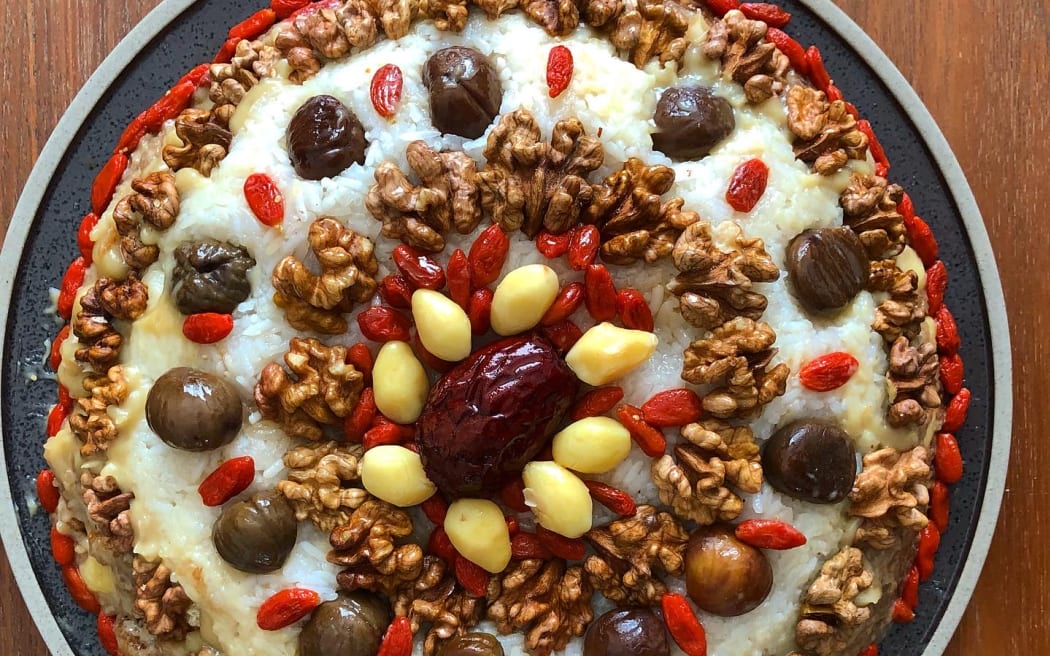
Eight-treasure rice puddings symbolise great fortune. Photo: supplied / Sam Low
Eight-treasure rice pudding (bā bǎo fàn, 八宝饭)
Bā bǎo fàn is a traditional Lunar New Year dessert made of glutinous rice mixed with eight different toppings, including dried fruit, nuts and red bean paste.
According to Chinese tradition, the number eight sounds like the Chinese word "fā" (发), which means to be rich or wealthy.
What's more, the pudding is colourful, representing luck and sweetness for the year ahead.
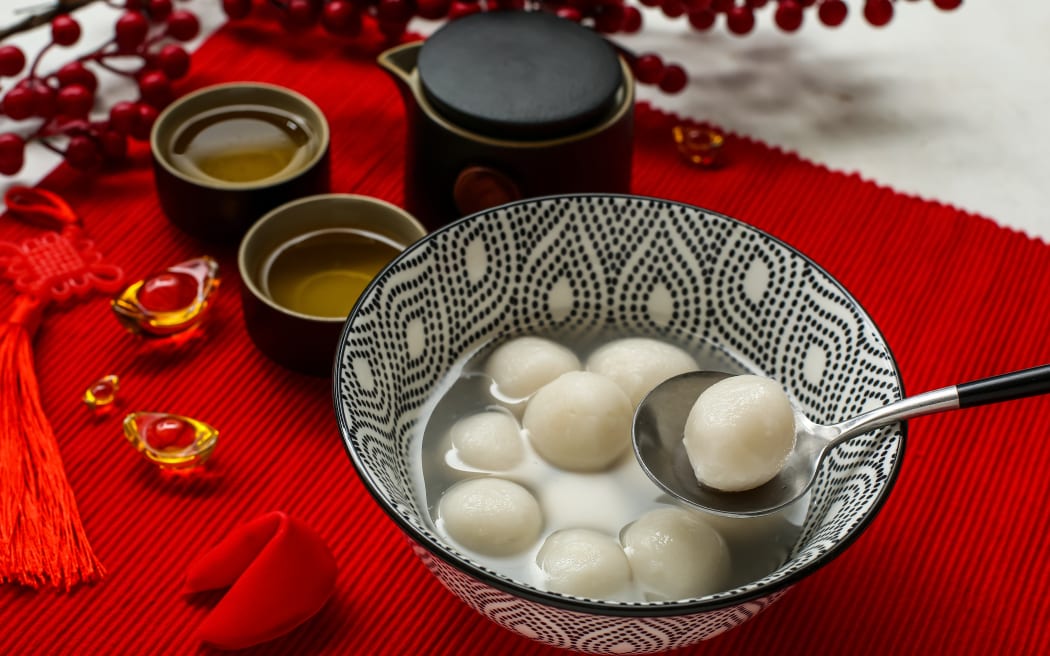
Delightfully chewy rice balls are served to represent family unity and togetherness. Photo: 123rf
Sweet rice balls/dumplings (tāngyuán, 汤圆)
Sweet rice balls, also known as sweet rice dumplings, are typically eaten during the Lantern Festival in many parts of China, but households in southern China consume them at new year.
The pronunciation of the word in Chinese and round shape of the rice balls are associated with the reunion of a family and feelings of togetherness.
Low, whose parents are originally from southern China, says rice balls play an important role on the dinner table.
"Tāngyuán, which are like a glutinous rice sweet dumpling filled with sesame and brown sugar, and cooked in water or ginger broth, are what we always have as our formal dumplings on the table," Low says.
Bai, who relocated to New Zealand from Shanghai, also says a plate of tāngyuán is essential on the first day of the year.
"Tāngyuán, also known as tuánzi or yuánzi, symbolises the reunion of the family, fostering a sense of togetherness during the festive season," Bai says.
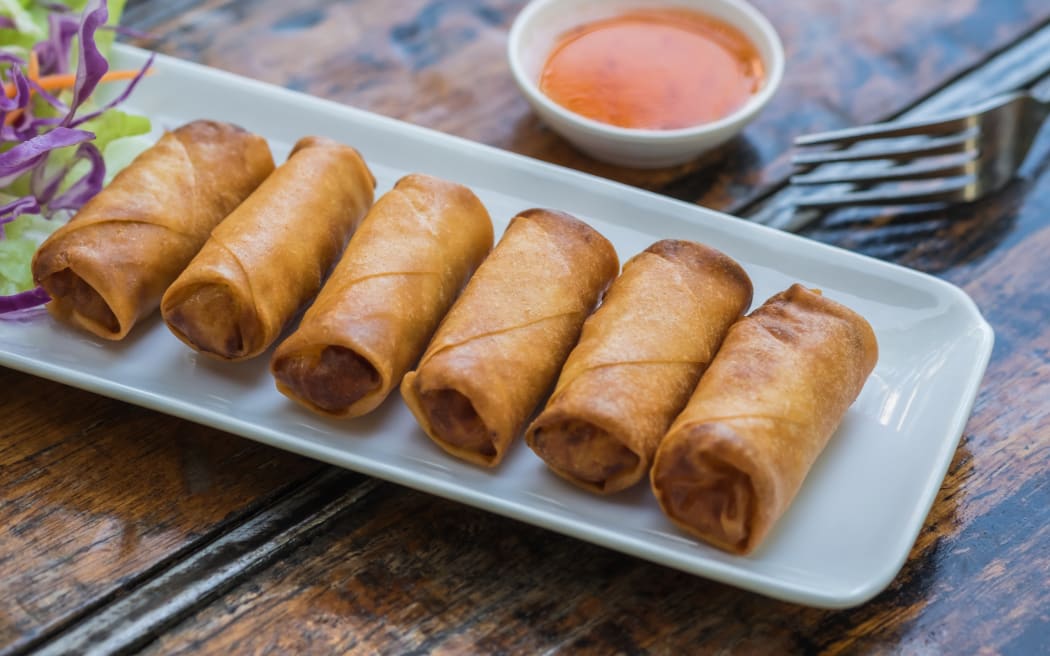
Spring rolls are eaten during the Spring Festival in southern China to celebrate the coming of spring. Photo: 123rf
Spring rolls (chūn juǎn, 春卷)
The Lunar New Year is also known as Spring Festival (Chūn Jié, 春节) in mainland China, so consuming spring rolls is a traditional way to celebrate the arrival of spring.
Spring rolls are particularly popular in eastern and southern China, especially Jiangxi, Shanghai, Guangzhou and Hong Kong. They are typically eaten on the first day of spring and can be served as a dinner dish, appetizer or snack.
Spring rolls are typically deep fried so that their exterior is crisp. Their golden skins also symbolize bars of gold, bringing wealth and prosperity in the new year.
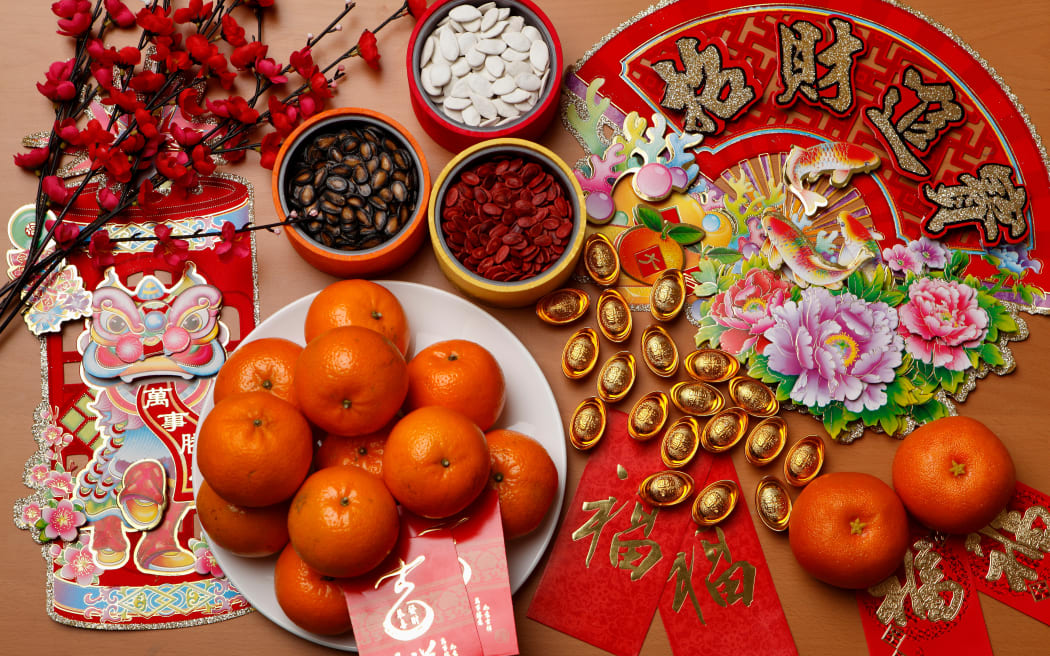
Round citrus fruit cloaked in a skin that's golden in color are believed to symbolize prosperity and bring the owner good fortune throughout the year Photo: 123rf
Festive fruit
Red and gold are lucky colors in Chinese culture. As a result, round citrus fruit cloaked in a skin that's golden in color such as mandarins and oranges are highly sought-after additions to a household over the new year.
Households and businesses in southern China also decorate kumquat trees with gold coins and red envelopes as a symbol of good fortune.
Low says his family will invariably consume such festive fruit over the new year.
In Chinese, the pronunciation of orange is "chéng", which sounds like the Chinese word for "success". This fruit also reflects people's best wishes for the new year, Low says.
"Like mandarins and oranges, the color (symbolises) prosperity," he says. "Mandarins are also called 'gān jú' (in Chinese), which represents gold and prosperity."
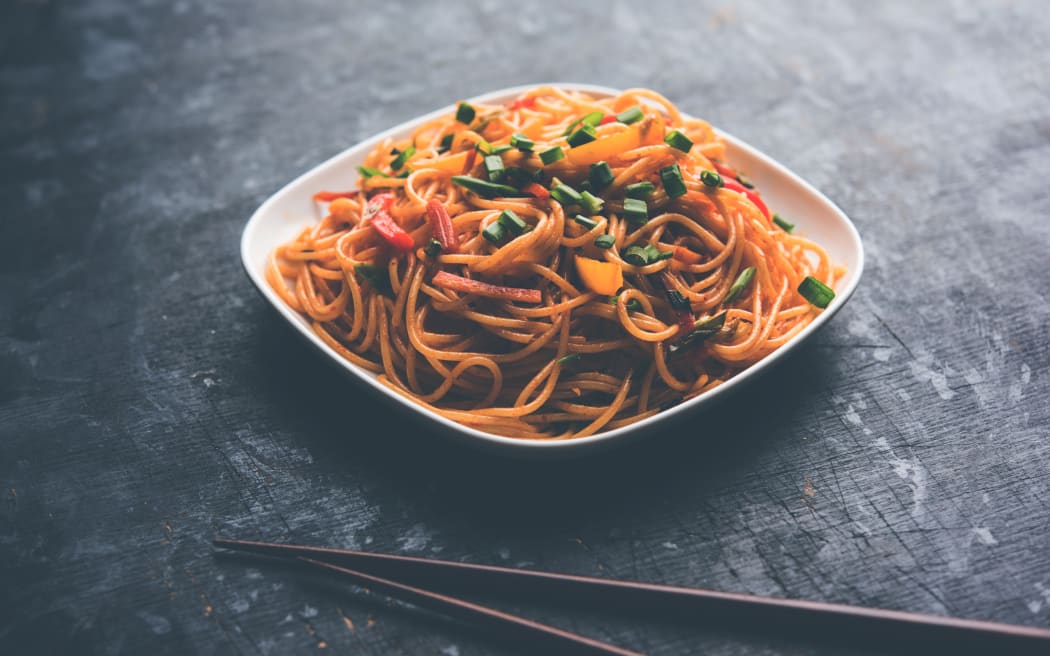
Longevity noodles are eaten on New Year's Eve in the hope of living a long life. Photo: 123rf
Longevity noodles (cháng shòu miàn, 长寿面)
Cháng shòu miàn, or longevity noodles, are eaten at dinner on New Year's Eve to ensure long life.
According to tradition, the person preparing the dish will not shorten the noodles when cooking them in order to extend a diner's life: the longer the noodle, the longer their life expectancy.
Low's parents used to own a noodle shop, and he says longevity noodles were an annual feature of dinner on New Year's Eve.
Low says it's important to eat cháng shòu miàn on New Year's Eve, but you can vary how they're prepared.
"Dad will always make fried noodles," he says.
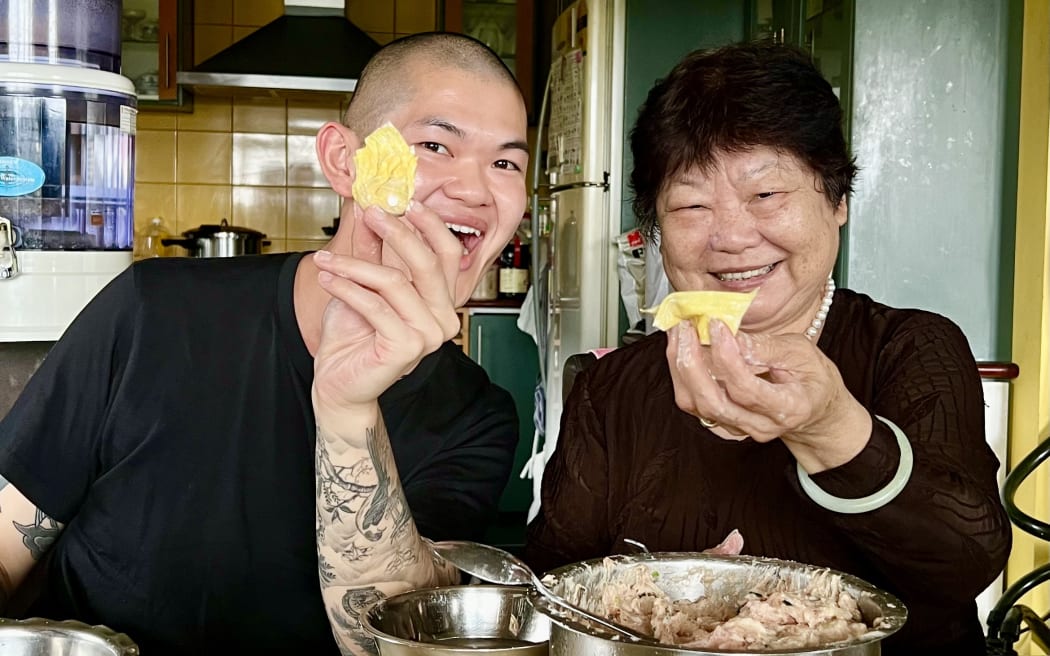
Sam Low makes wontons (small round dumplings) with his mum ahead of Lunar New Year. Photo: supplied / Sam Low
Maintaining culinary tradition
New Year food may differ from region to region, but the traditions continue to be handed down from generation to generation.
Low describes himself as a 1½-generation Chinese New Zealander, so Lunar New Year dishes and the culture behind them are traditions he will maintain as he gets older.
"It's really important we hang on to these traditions," Low says. "We can always adapt (some food we don't like) into something more suitable to our tastes. I will probably make niángāo more interesting, but still honour the tradition. "
Bai also says it's important to honour tradition over the new year, noting that such time-honoured dishes hold profound cultural significance and contribute to the rich tapestry of celebrations.
"The symbolism associated with each dish adds a layer of meaning beyond the culinary experience, reinforcing values such as prosperity, good fortune and family unity," Bai says. "They create a sense of continuity, connecting individuals with their cultural roots and fostering a shared understanding of the values embedded in these symbolic foods."
The photographs of dumplings, fish, spring rolls and longevity noodles that were published on Feb. 8 have been replaced to ensure the article is free of AI-generated images.


